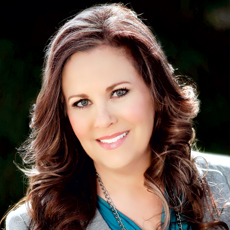
As I outlined in Part 1 of “The 3 Cs of Skin and Wound Care for LTC Providers,” skin and wound care is a poorly researched and lacks agreement and support of what is truly best practice. I proposed that we focus on what we do know as it relates to the clinicians who are providing the skin and wound care, regardless of research, product, wound type, assessment or resident population mix.
This is done in three steps called the 3 C’s of Skin and Wound Care. The first step is to demand and achieve clinician COMPETENCE. By achieving clinician competence, you gain clinician CONFIDENCE. And finally, by utilizing CONTINUOUS QA practices you will achieve a successful, impactful, marketable skin and wound care program while ensuring your clinicians have continued competence and thus confidence.
Before we explore the 3 Cs, it is important to recognize the primary roles of the CNA, nurse and therapist in skin and wound care.
All clinicians can fall into one or more categories labeled preventer, predictor and promoter, but I suggest each has a primary role in skin and wound care and wound healing.
- CNAs are primarily preventers. They’re focused on carrying out the established plan of care that addresses risk as well being key in early detection of declines and potential skin issues.
- Nurses are primarily predictors. They’re focused on identifying those at risk and predicting potential for wound development and healing potential. They establish the primary plan of care for the CNAs to carry out based on predictions.
- Therapists are primarily promoters. They’re focused on promoting well-being, maintaining highest level of mobility and teaching the importance of good skin care, disease management and compliance to established plan of care. They provide wound healing promotion through wound healing modalities, active wound care including various types of debridement as well as identifying and teaching the most appropriate turning, repositioning and transfer protocols.
Now the 3 Cs…
Competence: There are many ways to ensure competence. I will start with the CNA because they are truly the most important clinician for prevention. It is the “by the minute” routine care given by these individuals that ultimately determines the success of a skin and wound care program. Without their buy in and application of prevention strategies no program can succeed.
Competency for CNAs consists of several pertinent areas including but not limited to:
- Understanding their role in prevention
- Understanding how the skin works
- Importance of and performance of turning and repositioning
- Hydration and nutrition importance
- Identifying declines in conditions and new skin issues and reporting appropriately.
Strategies to gain competency and empower your CNAs may include but not limited to:
- Compliance to providing a solid and consistent orientation on skin and wound care developed by the interdisciplinary team.
- CNA class on skin and wound care with facility challenges and competitions
- Wound care vendors providing training on prevention products.
- Turning, repositioning and transfer training with return demonstration
- Restorative nursing training focusing on how to carryout mobility, Range of Motion, pain management, and device/splint management with skin checks.
- Identifying a strong lead competent CNA to be an influence and peer reference.
Competency for Nurses consists of several pertinent areas including but not limited to:
- Understanding their role in prediction of risk for developing skin issues.
- Understanding how the skin works.
- Importance of monitoring and enforcing turning and repositioning.
- Appropriately seeking registered dietician intervention for maximum hydration and nutrition plans.
- Acting upon declines in conditions and new skin issues quickly through thorough assessment and seeking necessary referrals.
- Skills check off for non-sterile dressing changes and NPWT dressing changes.
Strategies to gain competency and empower your nurses may include but not limited to:
- Compliance to providing a solid and consistent orientation on skin and wound care developed by the interdisciplinary teams.
- Thorough in-servicing on product formulary, assessment and documentation standards.
- Wound care vendors providing training on prevention products.
- Turning, repositioning and transfer training with return demonstration.
- Restorative nursing plan development with assistance of therapy focusing on mobility, range of motion, pain management, and device/splint management with skin checks.
- Identify a strong lead competent nurse to be an influence and peer reference.
Competency for therapists consists of several pertinent areas including but not limited to:
- Understanding their role in prediction of risk for developing skin issues and how skilled therapy can impact risk.
- Understanding how the skin works.
- Importance of monitoring and enforcing turning and repositioning and how to teach other clinicians and the resident the importance of and safety during and use of positioning devices.
- Appropriately seeking registered dietician intervention for maximum hydration and nutrition plans and supporting the implementation of recommendations.
- Acting upon declines in conditions and new skin issues quickly through responding timely to referrals from nursing and physicians.
- Skills check off for non-sterile dressing changes, NPWT dressing changes, Compression Therapy, Unna’s Boots etc.
- Additional skills check offs for all types of debridement techniques and wound healing modalities.
Strategies to gain competency and empower your therapists may include but not limited to:
- Compliance to providing a solid and consistent orientation on skin and wound care developed by the interdisciplinary team.
- Thorough in-servicing on product formulary, assessment and documentation standards.
- Wound care vendors providing training on prevention products.
- Skin and wound care documentation and billing standards review.
- Assisting in developing restorative nursing plans for mobility, range of motion, pain management, and device/splint management with skin checks, as well as deem CNA and nurses competent in restorative nursing through skills check offs.
- Identify a strong lead competent physical therapist to be an influence and peer reference.
- Develop and train on wheelchair, cushion and therapeutic support surface formulary related to risk levels.
- All clinicians will gain confidence by repetition and consistency of the provider to support them.
Facilities should never assume clinicians “get it.” You should provide repeat trainings do unannounced skills checks and avoid making changes to formulary unless systematically rolled out.
- Demand quarterly trainings to your staff by your formulary vendors, and don’t forget the night shift!
- Create a meaningful reward system for your staff. Empower your staff. Seek specializations for staff that show interest in the area of skin and wound care.
Continuous QA
Without continuous Quality Assurance no facility can confidently know their staff is competent or confident in skin and wound care. QA should focus on:
- Reviewing the skin and wound care systems. Ask if they work, and if you are in compliance, plus if you are getting desired outcomes.
- Training and Orientation. Is it provided and provided consistently? Is it appropriate and contain all necessary information? Are competencies validated?
- Facility Wound Caseload. What is acquired at the facility? Make sure staffing to volume and extent of wounds is appropriate.
- Product and prevention tools. Are levels adequate and available to the clinicians?
- Community recognition and referral sources.
Finally, is your facility known for “good” or “bad” wound care? Is wound care your niche? Should it be? Are your vendors reflecting positively or negatively on your facility? Do your market your team’s specializations and advanced wound care approaches?
Survey Success
Is your skin and wound care system supporting good survey outcomes? Do your HR records show current competencies? Does your staff demonstrate confidence during the survey process? Are your vendors supportive?
A provider can also apply the 3 Cs to their organization as it relates to skin and wound care program efficiencies and success. Specifically, investigation if the organization has competent vendors, and proof of confidence. Ask if your organization handles the complicated wound admission competently. Does your organization focus on clinicians with strong interests and skills in skin and wound care and empower them to teach and train and assist in helping other clinicians to gain competence?
With confidence, does your organization present to residents, community and referral sources a confidence in skin and wound care and wound healing? Does your organization’s statistics reflect a competent skin and wound care program and those stats are confidently promoted to the community?
In continuous QA, does your organization have a structured process for assuring quality in skin and wound care?
Does your organization have marketable statistics and positive outcomes? Does your organization seek tools and consult of others in the industry to continuously improve processes and services?
The science and philosophy surrounding skin and wound care in LTC is yet to be truly defined for best practice. Meanwhile, using the 3 Cs approach can help you control and influence the constant of skin and wound care-your clinicians.
Tara Roberts, PT, is the corporate director of rehabilitation and wound care services at Nexion Health Management, Inc.





